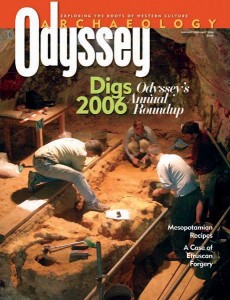Origins: Adding Up
Roman numerals derive from Etruscan counting systems

As I write this, the National Football League season is underway, and U.S. football fans are looking forward to Superbowl XL. Some of us are old enough to have watched all the Superbowls, starting with Superbowl I back in MCMLXVII, when Vince Lombardi’s legendary Green Bay Packers defeated the Kansas City Chiefs XXXV to X in the old Los Angeles Coliseum. These days I root for the Carolina Panthers, who lost Superbowl XXXVIII to the New England Patriots, XXXII to XXIX, in a contest remembered more for Janet Jackson’s wardrobe malfunction than for the football game.
In terms of mathematical technology, the Roman numerals in the last paragraph have been obsolescent for more than a thousand years, but we still use them to mark the hours on clock faces, the pages of a book’s preface or the elements in a sequence such as King Henry VIII or Superbowl XL. Students in elementary schools have to put down their calculators to learn a number system designed to be chiseled in stone. The rules they learn are very old, but oddly enough many of these rules don’t come from the Romans but from medieval scribes who codified a process the Romans themselves used much less formally.
Already a library member? Log in here.
Institution user? Log in with your IP address.

